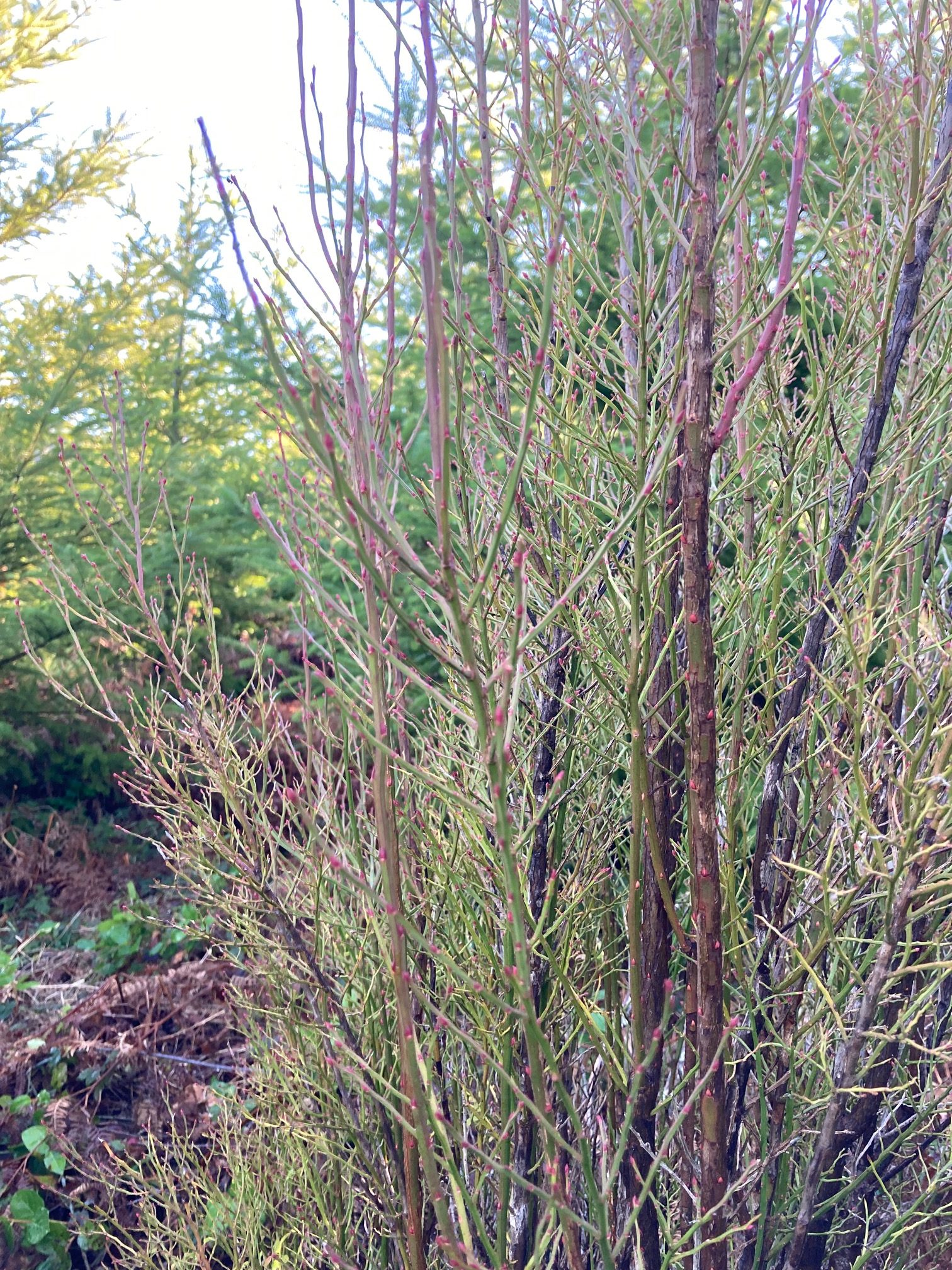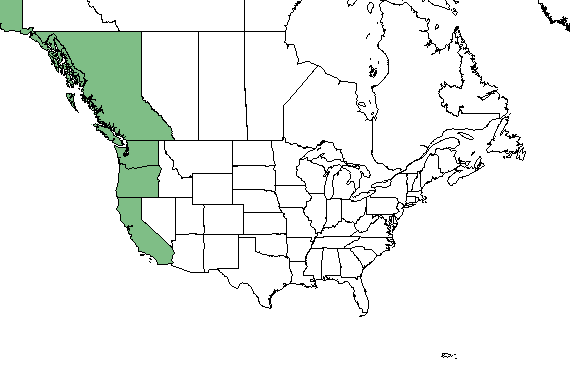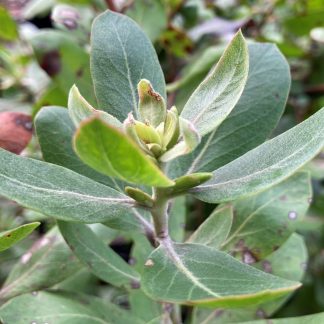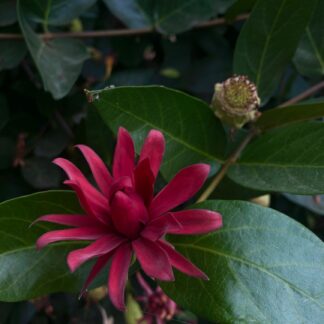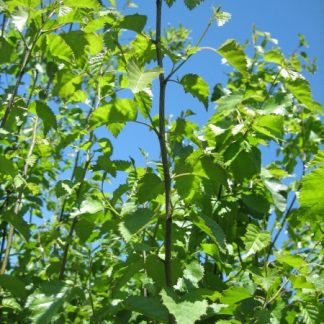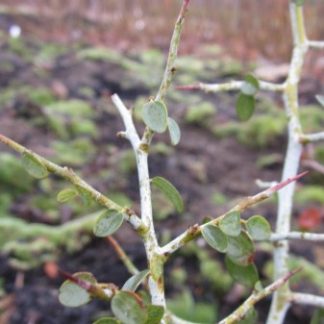Vaccinium parvifolium
red huckleberry
Habit: this is an attractive huckleberry shrub with bright red fruit and a graceful branching habit. Its thicker, older stems are red brown and grow upright, 4 to 12 feet tall. Young growth is green and slender, and typically straggling in sharp angles. Its alternate, solitary leaves are thin, oval to elliptic and are lighter green beneath. The leaf margins are entire on mature plants, and finely serrated on juvenile ones. When blooming, the angled branches are covered in greenish to pinkish urn-shaped flowers. Each blossom is borne singly in the leaf axils, and lasts from mid spring to early summer. Flowers are followed by large, cherry-like berries. The fruits are sour but tasty.
Ecology: red huckleberry grows in moist, dense, coniferous forests or in open brush fields, from sea level to 5,000 feet of elevation. The plant typically settles on wet, rotting logs or stumps where it uses the available moisture to survive long periods of drought. This species is widespread from southeastern Alaska to central California, and from the Pacific Coast to the western slope of the cascades.
Growing conditions: it thrives in partial to full shade or in the dappled light of dense forests. Soils are often moist, acidic, and rich with decaying organic matter. This is a lacy, airy shrub for a moist woodland or wildlife garden. Several birds and mammals, including bluebirds, mice and bears are fond of the berries. The fruits are large and tasty, but grow sparsely along the shrub, making harvesting more difficult for this species.
Vaccinium parvifolium has been traditionally an important food source for Native Americans. Tribes including the Nlaka’pamux and the Secwepemc gathered the berries and ate them fresh or dried.
Specs
Deciduous Shrub
4-12 ft (1.2-4 m)
2-5 feet (0.6-1.5 m)
4a to 9b

